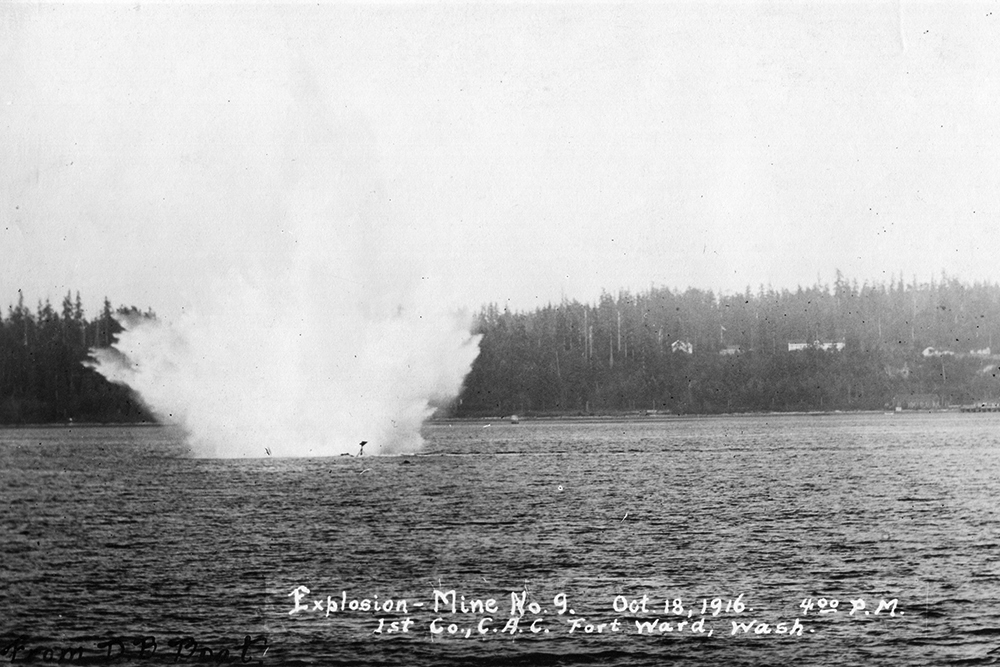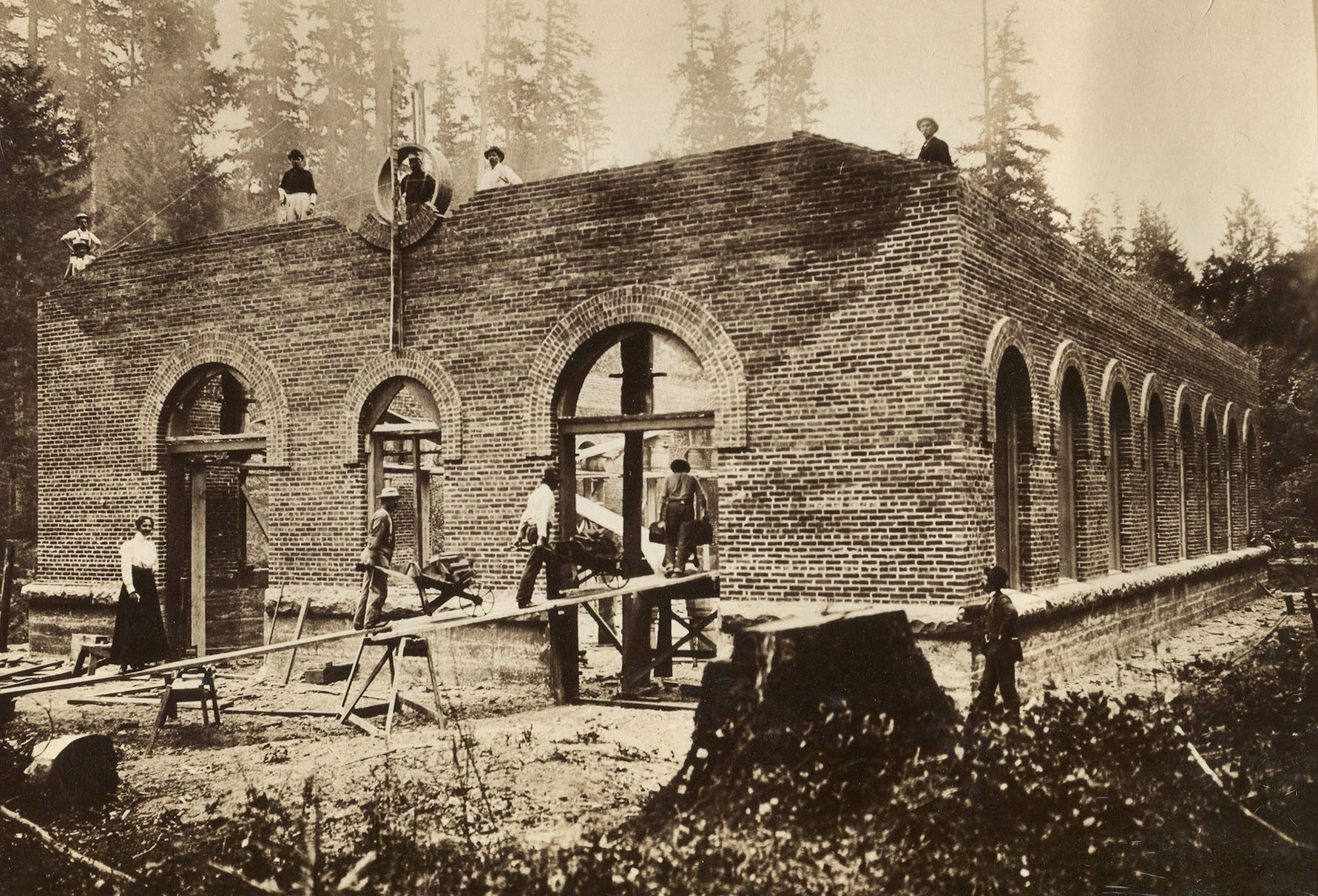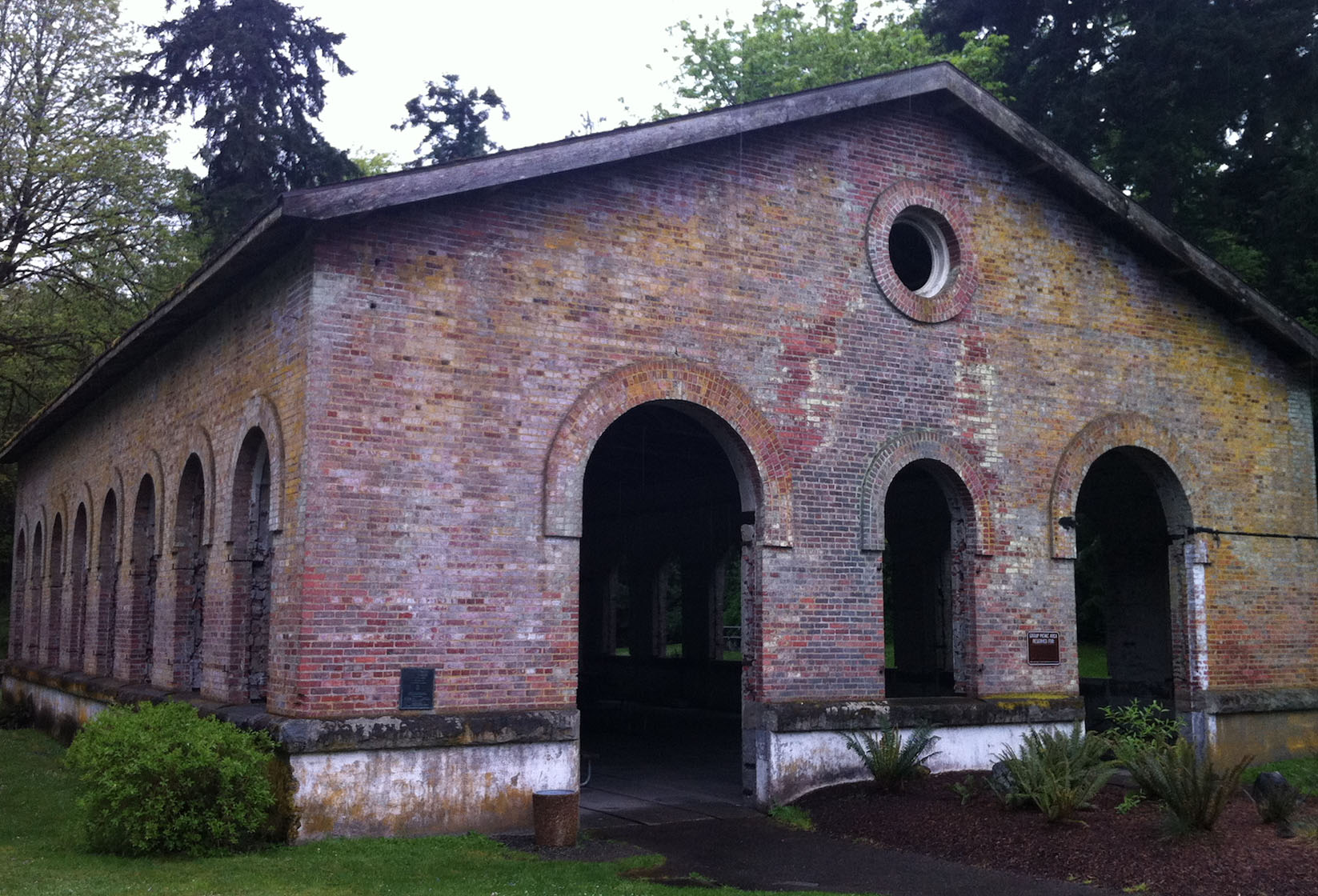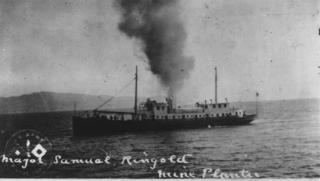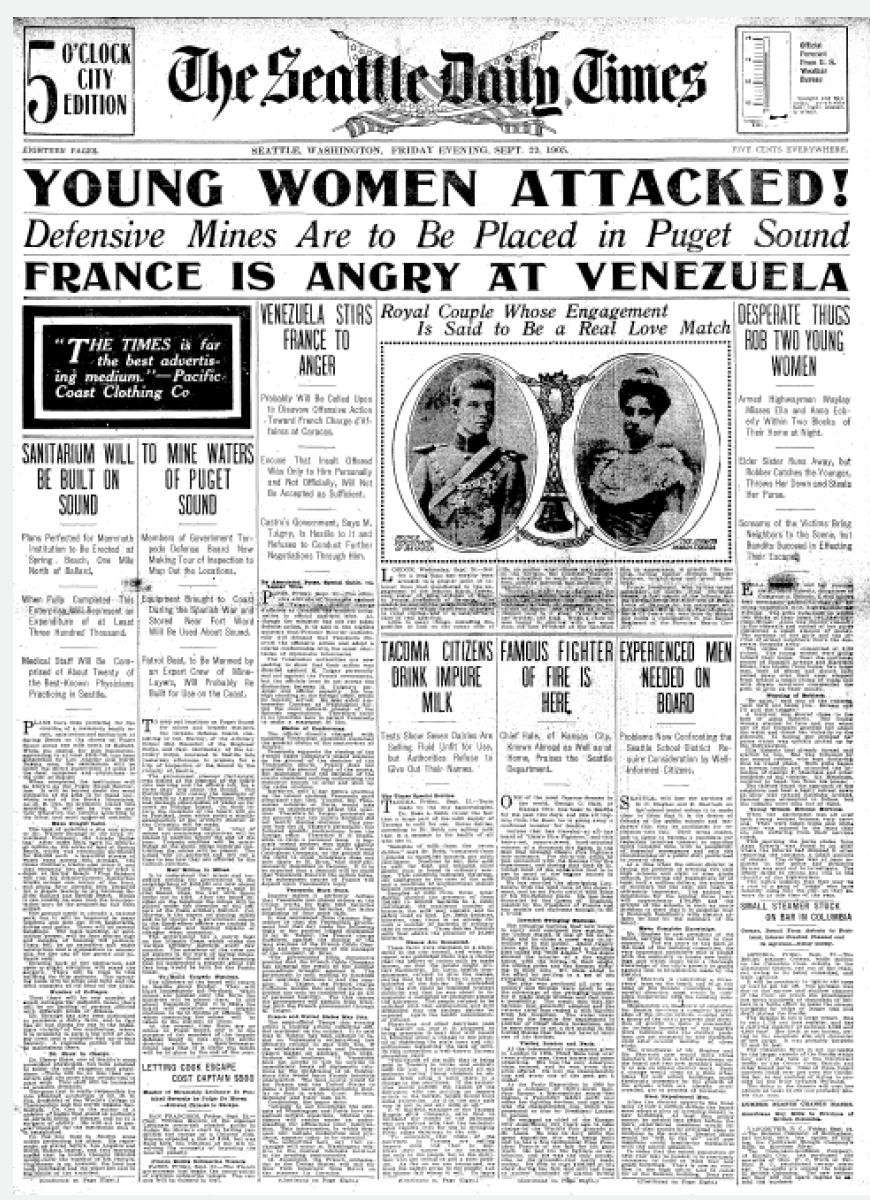Fort Ward construction began in 1900 as part of the Puget Sound coast defense network, which also included forts Worden (Port Townsend), Casey (Whidbey Island) and Flagler (Marrowstone Island), the “Triangle of Fire.” While her larger sister forts were designed around big shore-mounted guns, Fort Ward’s mission of protecting the new Bremerton Naval Shipyard called for a different sort of defense: a floating minefield in Rich Passage.
Mines were arrayed in a grid across the water and secured to the bottom by cables. Unlike the “contact” mines of later eras, these mines were detonated by electrical remote control from a plotting and firing station onshore.
The Middle Point Military Reserve, across Rich Passage at Manchester, was intended to be the “other half” of Fort Ward. The Rich Passage mines and cables were stored at Middle Point from 1900-1910. And that was A LOT of cable. Middle Point had 31 reels of cable weighing 91 tons that needed to be stored and kept ready for deployment.
The mines were stored at the Middle Point until 1910, then moved to Bainbridge Island when Fort Ward was consolidated on this side of the water.
Were they “mines” or were they “torpedoes”? Sometimes in the literature you will see reference to the big Middle Point building as a “torpedo storehouse” — that’s because the floating explosive charges that we call “mines” were once called “torpedoes.” During the Civil War, when Admirable Farragut famously said “Damn the torpedoes, full speed ahead!” he was actually talking about a floating mine field in Mobile (Alabama) Bay. It wasn’t until later that the self-propelled torpedo charge was invented, and the terms began to take on separate meanings.
Placing mines in Rich Passage
The Fort Ward pier was the center of mine-laying activities. The typical mine was a steel sphere 32 inches in diameter. The fuse and explosive charge only took up a small part of the inside, and the rest of the mine was hollow – that’s why they were buoyant.
Rich Passage mines were planted by the USS Samuel Ringgold, a special vessel commissioned for the Coast Artillery Corps that entered service in 1904. Location of mines across the channel was highly classified.
The onshore plotting and firing stations were called “casemates.” The casemate at Manchester is still there, across the lawn from the mine storage building. Fort Ward’s mines were never detonated in an act of defense, but they were test fired periodically.
The map below shows the two “halves” of Fort Ward, with most operations on Bainbridge Island and submarine mine facilities located across Rich Passage at Middle Point (Manchester). Fort operations were consolidated on the Bainbridge Island side in 1910.
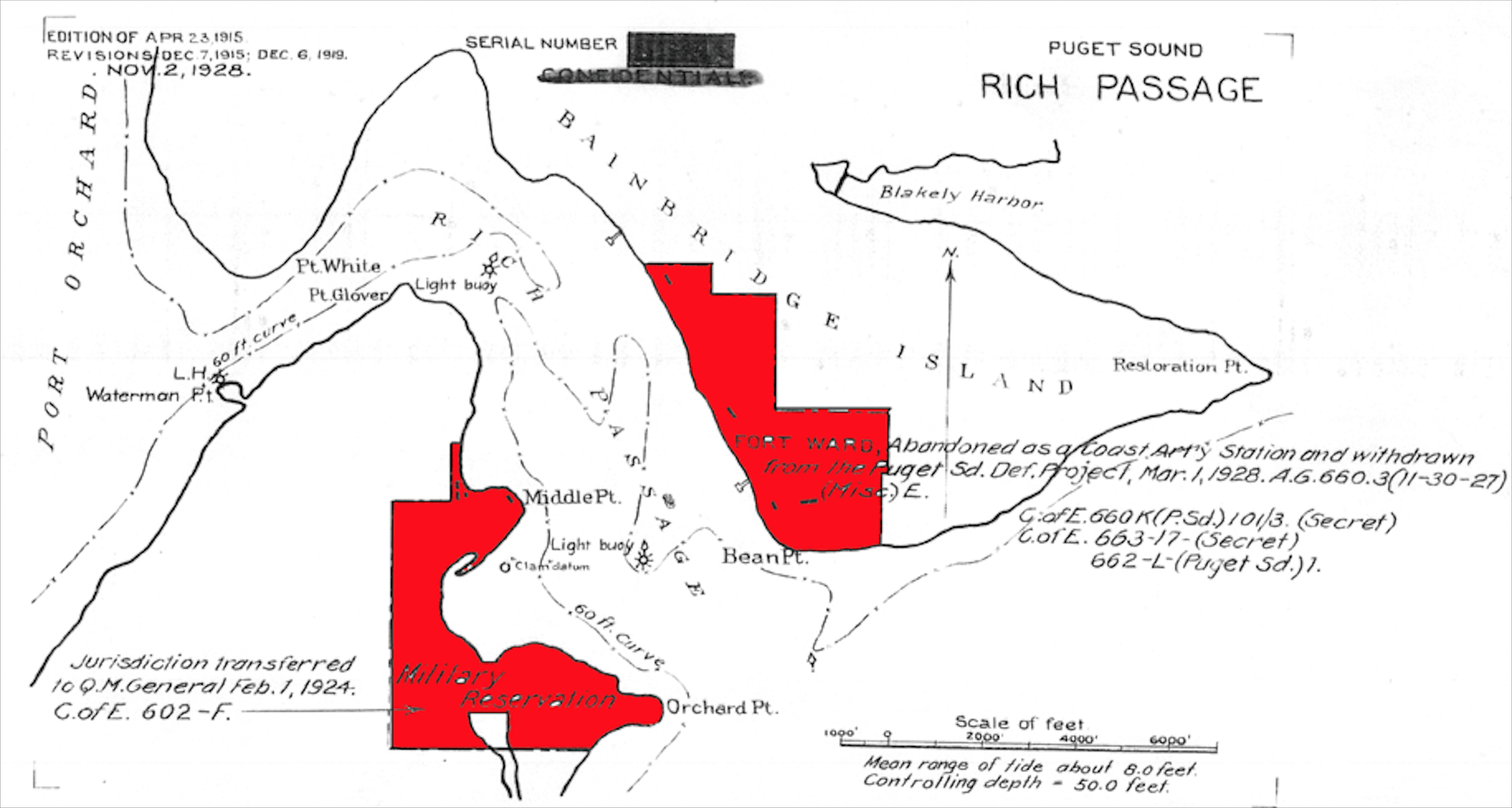
Echoes from Fort Ward history
FROM THE ARCHIVES: Seattle Times, Sept. 22, 1905
Defensive Mines Are to Be Placed In Puget Sound
TO MINE WATERS OF PUGET SOUND
Members of Government Torpedo Defense Board Now Making Tour of Inspection to Map Out the Locations Equipment Brought to Coast During the Spanish War and Stored Near Fort Ward Will Be Used About Sound Patrol Boat, to Manned by an Expert Crew of Mine-Layers, Will Probably Be Built for Use on the Coast
To map out locations on Puget Sound for mines and torpedo stations, the torpedo defense board, consisting of Col. Murray, of the Artillery Corps; Major Roessler of the Engineer Corps, and Capt. McCloskey, of the Artillery Corps, convened in Seattle late yesterday afternoon to prepare for a trip of inspection of the Sound in the vicinity of Seattle.
The government steamer Cartwright was placed at the disposal of the board this morning and the officers left for a three days’ trip about the Sound. The Cartwright will convey the members of the board to Agate and Deception Passes and through other bodies of water as far north as Fidalgo Island. On their return the members of the board will go to Portland, from which point a similar examination of the artillery district of the Columbia will be made.
It is understood that a vast number of mines not containing explosives will be placed in position before the end of the year. Torpedo stations will be established on the shore, where batteries controlling the mines will be placed. The mines will be anchored and left for a time to see how they are affected by the various currents.
Half Million Mines
It is understood that mines and torpedoes costing the government in the neighborhood of $500,000 are now stored near Fort Ward. They were sent to the Sound when the war with Spain broke out in 1898. After the board decides on the locations the mines will be placed under the direction of the officers of the Coast Artillery district. Col. Murray is the expert on placing mines and is in charge of a government school in the East where officers are trained in laying mines and making repairs of changes when necessary.
The government has a patrol boat on the Atlantic Coast which visits the various artillery districts every few months. The members of the crew are all experts in the work of laying mines. Quartermaster Grant said this morning that he understood a steamer about 150 feet long would be built for the Pacific Coast.
To Build Torpedo Stations
The members of the board will return to Seattle about Sunday. They will leave immediately for Portland. When mines are located near the forts the batteries will be placed there. In and about Deception Pass it is likely the board will establish several torpedo stations, to be in the charge of officers. The wires connecting mines will be taken to the stations on shore.
At the present time there are no mines on Puget Sound, and it is the purpose of the members of the torpedo defense board to map out the entire district while here. Quartermaster Grant says that it is likely the mines will be placed by the end of the year.
– Sept. 22, 1905, The Seattle Times
